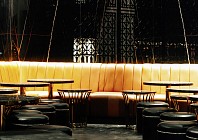In the often snobby world of luxury, brand is everything. When it comes to high fashion, it is the Italian and French fashion houses that have been around for hundreds of years whose brand names we pay premium prices for. It doesn’t matter that newcomers can produce products of equal quality; they don’t have the pedigree that comes with big brand names.
And so it is in the world of automobiles. Prestige carmakers have decades of high-performance engineering and interior styling to call upon when creating new models, and their names are synonymous with luxury. But for newcomers, or firms that are moving into the luxury arena for the first time, it’s an uphill struggle to get that sort of recognition.
It was with this knowledge floating around my subconscious that I accepted the invitation to review the 2014 Hyundai Centennial, the flagship model in the South Korean carmaker’s stable.
Known more for economical run-arounds, mid-range sedans and small SUVs than premium vehicles, the Asian firm entered the luxury arena in 1999 when it first launched the Centennial. The car sold well in Asia, but remained relatively unknown in the rest of the world. Until now.
I’m immediately bemused with the welcome jingle as I enter the car and turn on the ignition, but also impressed with the space and the comfortable seats. The central console and dashboard lack the refined finish of its competitors
— the Mercedes-Benz S-Class, BMW 7 Series and the Audi A8 — but when I start the engine, it becomes apparent that this book should not be judged by its cover.
I’m struck by the silence. Soundproof glass blocks out the construction noise around me and I find myself in a cool and tranquil environment. Controls for most of the tech functions can be found on the ergonomic steering wheel, finished, like the rest of the interior, in mahogany trim, with French-stitched instrument panel and micro-fibre suede on the roof.
My passengers in the back are impressed with the reclining rear seats, although anyone above 5’6” will struggle to enjoy the fully-reclined position, even with the front passenger seat moved all the way forward via a handy control. Perhaps an extended wheelbase version of the Centennial could be the solution. The large 9.2-inch LCD rear screens are a hit, as is the refrigerated compartment in the rear armrest, big enough for a few small bottles of water.
Automatic sunblinds and climate controls keep things cool, and back-seat passengers can control everything from their own console.
In the back seat, the already smooth ride is even better, as a plethora of tweaks to the shock absorbers and dampers designed especially to maximise rear seat comfort come into play. But even up front, it is a smooth ride. The advanced 4.8-litre V8 has been well-tamed, ensuring it stays steady. There is no jerking when pulling away or braking, and steering is very light. When the need for speed arises, the V8 delivers, as a surprised A8 driver discovered when I left him at the lights.
Hyundai has gone to town with the technology in this new Centennial, with a collection of functions that have esoteric lights flashing and warnings beeping every 30 seconds. The line-up includes Blind Spot Detection, which causes a warning to flash on your wing mirror and HUD every time a car appears in your blind spot, and a warning sound if you indicate to move while the light is illuminated.
One of my favourite things is the all-round view parking camera, which gives you a 360-degree view of the entire car, including a computer-generated bird’s-eye view of your surroundings.
Although it lacks some of the refinement of its European counterparts, the Centennial is a very good car indeed. As a corporate or personal limousine for a discerning buyer who isn’t distracted by more well-established brand names, the Centennial is an economical alternative that will not disappoint.










